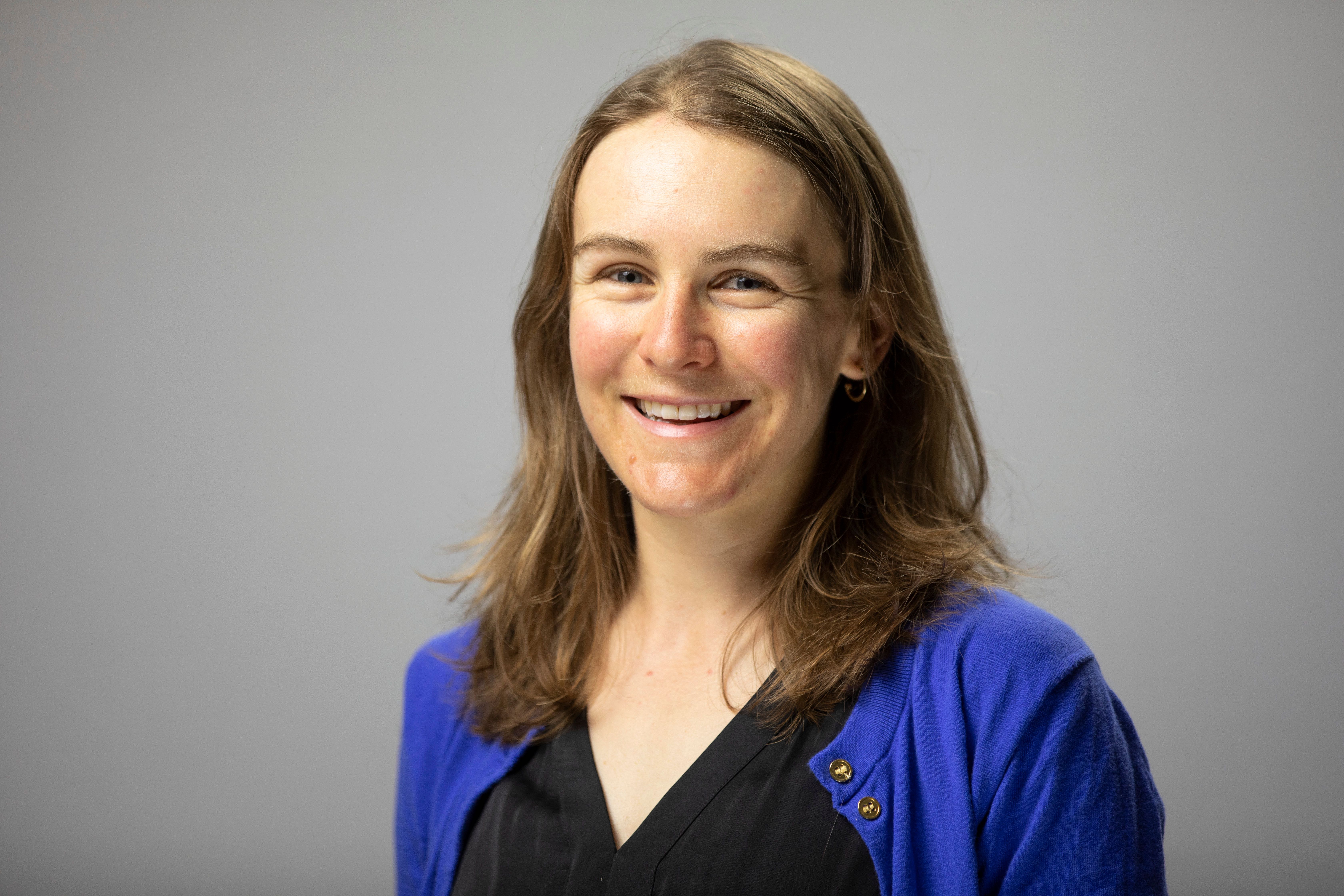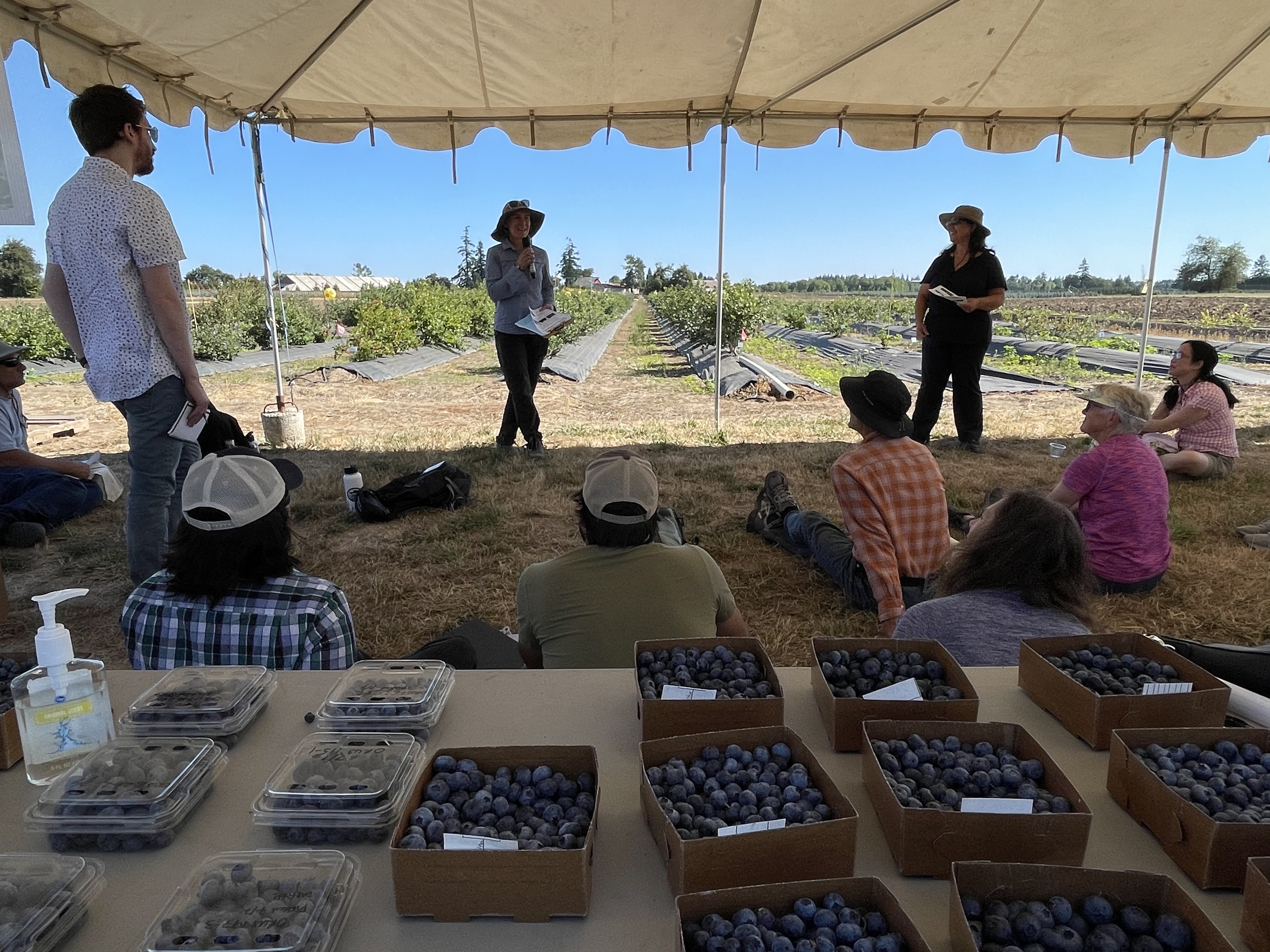Dr. Claire Luby is the newest Co-PD to join the VacCAP team. She is a Plants Research Geneticist at the USDA-ARS Horticultural Crops Research Unit in Corvallis, Oregon, USA, where the lab focuses on blueberry breeding and genetics. We spoke with Luby about joining the blueberry industry, challenges, and the future of her breeding program.
What’s it like coming into the blueberry industry and creating a breeding program?
The blueberry industry has been incredibly supportive since starting in this position in summer 2021. I can tell there is a lot of interest in making sure that the breeding program is successful. I’ve also been fortunate to step into a program that is already quite established. This has made the transition much smoother than if I were starting from scratch. There are so many great plants to work with that are already part of the program, and many projects that are already ongoing, and that has made the transition quite smooth.
What made you excited to get involved in the industry?
I’m excited by the energy surrounding the blueberry industry and the collaborative nature of the research in this area. I really enjoy working with the growers, nurseries, and other researchers and the scope of projects that we get to work on—everything from heat damage mitigation to breeding high quality cultivars.
What are you most excited about when it comes to working on VacCAP project?
I think this project has so much potential to help us support plant breeding efforts in blueberry. I’m impressed by the scope of the project and the potential to connect some of the important fruit quality traits in blueberry with both genetic markers and consumer sensory data.
What do you see the main challenge being? Challenges in general?
I think some of the primary challenges in blueberry breeding are that there are so many important traits to consider, from fruit quality to harvest and post-harvest to disease tolerance/resistance traits. In addition, production is expanding rapidly and there is desire for new cultivars, which puts some pressure on getting new selections out into trials quickly.
Where do you see your breeding program in the next 10-20 years?
We are hoping to release some new cultivars with exceptional fruit quality, firmness, that retain quality in storage, that are disease tolerant and that are met enthusiastically by growers and the industry. Also, I’m interested in research on how breeding can contribute to more sustainable production systems and mitigate effects of climate change, like that of the heat dome event that we experienced last summer.
What’s it like transitioning to work with perennial crops like blueberry? Please highlight a bit of your previous background.
Before accepting this position, I was working primarily on seed propagated crops, and had a lot of experience working on carrot. So, in some ways, blueberries are quite a different crop and production system. However, the transition has been relatively smooth.
Breeding programs are set up in much the same way, even if the time scales, genetics, and propagation techniques are different. I’ve really enjoyed diving into learning about the specifics of blueberry genetics, breeding, and production systems.
Is there anything new and exciting coming out of the USDA-ARS breeding program that you’d like to share with the VacCAP community?
We have a lot of very promising selections in the pipeline in our breeding program. We’re working on getting them out into larger scale grower trials to determine viability as cultivars. It has also been exciting to have some detailed data on theses selections from the VacCAP project.














